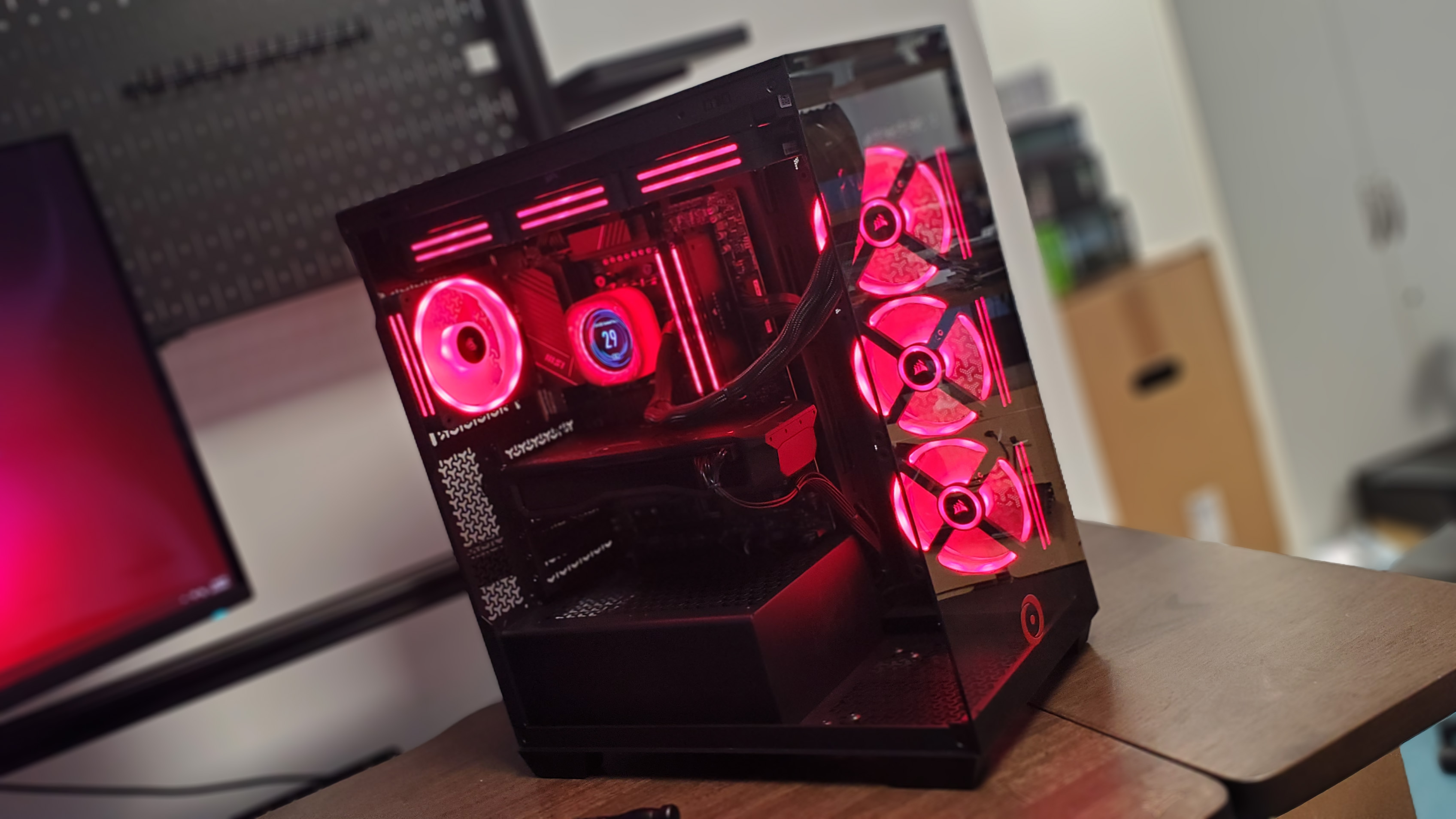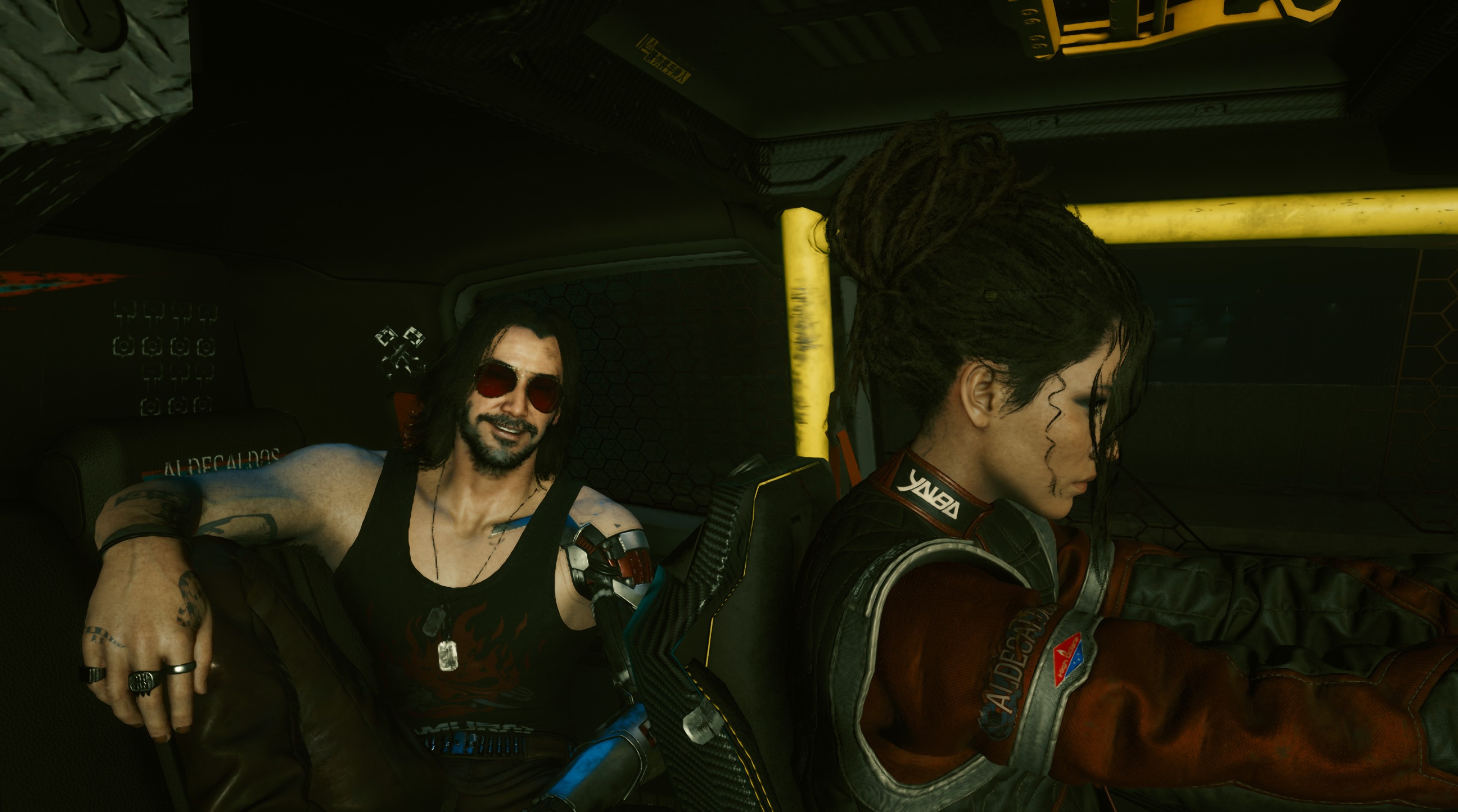
There are lots of great spots to get a good view of Cyberpunk 2077's Night City. At the Kabuki waterfront, you can soak in the sights of its tiered buildings and the massive skyscrapers of Japantown beyond. On the slopes of North Oak, meanwhile, a breathtaking panorama of Japantown and the Central district awaits. But my personal favourite place to take in Cyberpunk's sprawling metropolis is not fixed to any specific location—it's from the passenger seat of a car.
While I enjoy driving around town, I much prefer to be driven around by the game's various NPCs. During missions, characters like Panam or Takemura or Rogue will offer to drive you to the next phase or objective. This is usually optional, but I always accept, because to decline would be to miss out on what are quietly the game's best moments.
Normally, taking a spectator's role in a game like this is anathema to me. Games are about play, about doing stuff, so why on Earth would I want to passively sit in a fake car while a fake person yammers onto me about their fake life? Perhaps it's because actually doing stuff in Cyberpunk isn't always that much fun, but while I find the broader mechanics frustrating, that isn't fair to the designers who created Cyberpunk's virtual ride-alongs.
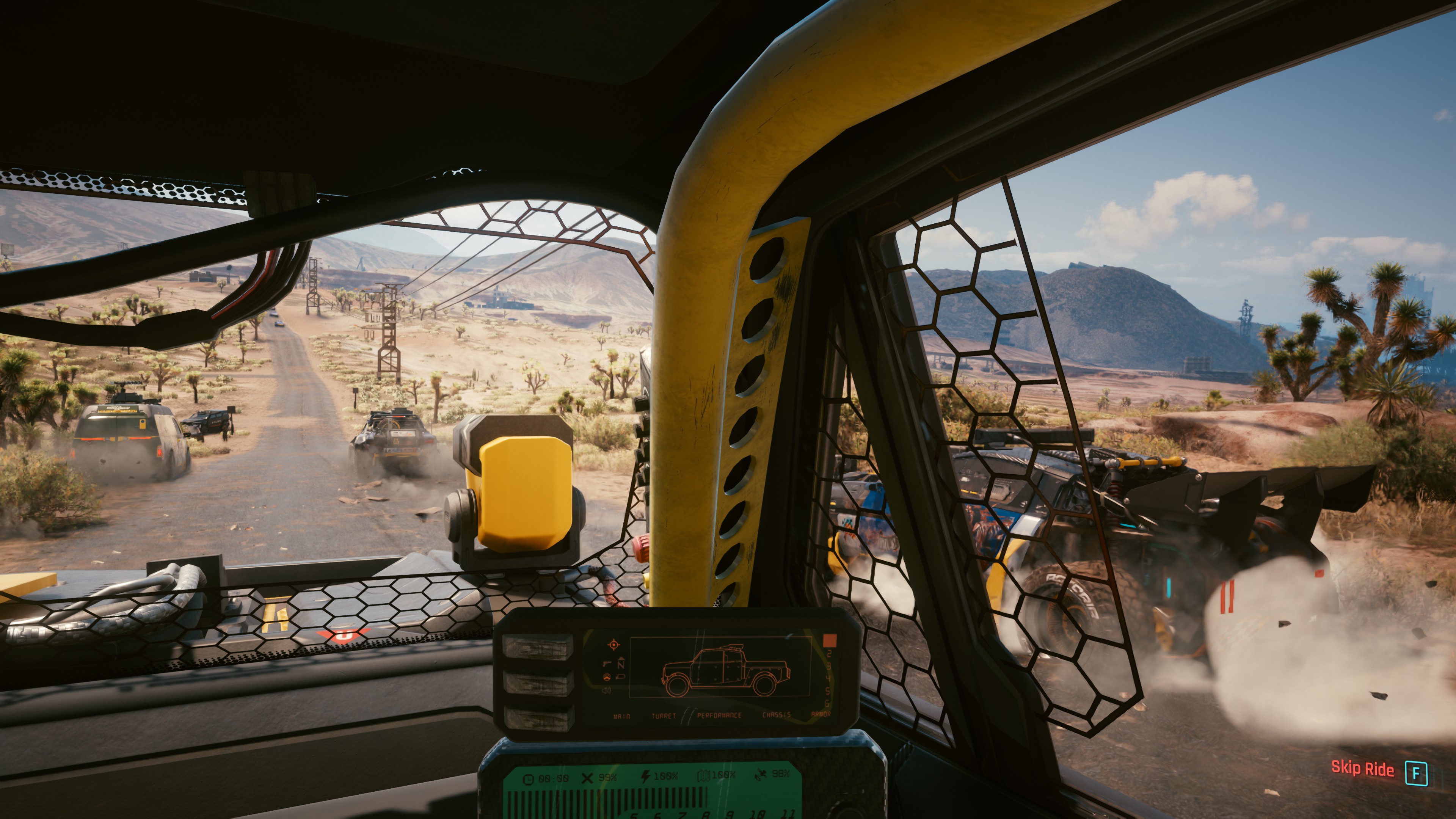
Night City is a stunning virtual world, but also an overwhelming one. The suffocating density of its skyscrapers, the kaleidoscopic assault of its neon billboards, the endless bustle and noise—it can be hard to take in all at once. Finding a quiet spot on the city's outskirts helps, but it also feels weird to view Night City while standing still. It's fundamentally a place about movement, always on the go, looking for the next hustle. It's a city filled with sharks. Stop and you'll start to sink.
That's why the inside of a car is the best place to get a feel for the city. Peering out the passenger window, you're treated to a rolling slideshow of the city in motion, while a car's hermetic interior seals you off from the city's unceasing clamour. They provide a little bubble of peace and quiet, letting you focus on the buildings and billboards as they slip by.
I love the design of the vehicle dashboard and interiors. If you drive in third-person, you might never notice them at all, and even in first-person it's hard to appreciate the work that's gone into them, because your eyes are on the road. From the passenger seat, you can freely take in the attention to detail, all the lights, dials and buttons. The first time I slipped into the passenger seat of Rogue's Quadra Type-66, I forgot all about the city outside and spent most of the journey staring at the scarlet-illuminated contours of the dashboard. I mean, just look at it. It's like the world's cosiest disco, dazzling and yet intimate.
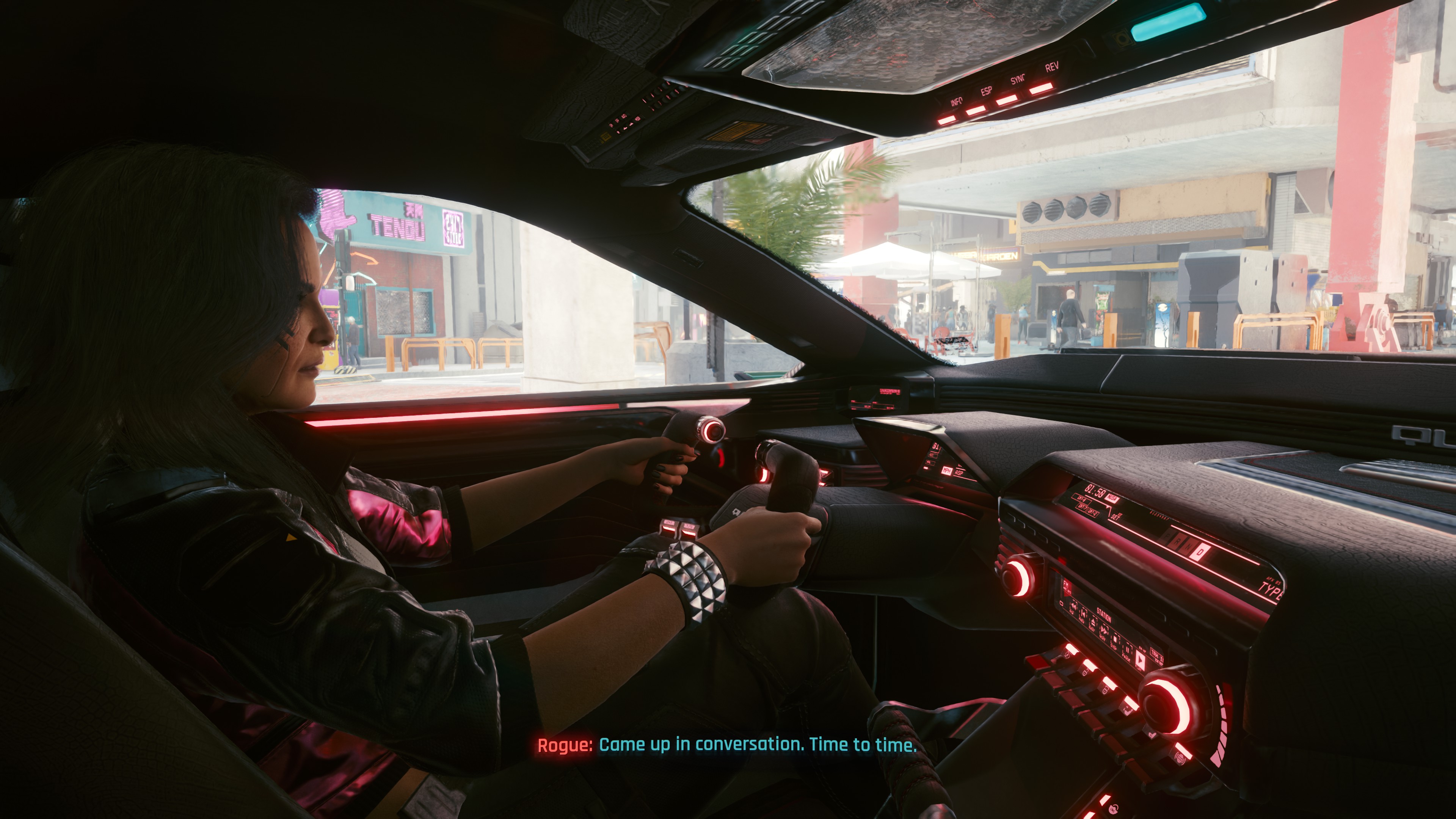
Intimacy is perhaps the key element in Cyberpunk's ride-alongs. For all its visual bombast, high-stakes plot and explosive combat, Cyberpunk, like The Witcher 3 before it, is still at heart a game driven by its narrative. Its best moments are often its quietest, the one-on-one conversations you have with its roguish supporting cast. Whether you're chatting with Judy Alvarez on the balcony of her apartment, or plotting with Takemura in a local diner, the way Cyberpunk takes time to develop its characters and relationships is undoubtedly the best thing about it.
The biggest gaming news, reviews and hardware deals
Keep up to date with the most important stories and the best deals, as picked by the PC Gamer team.
The ride-alongs show Cyberpunk at its most intimate. Unlike many of the other conversations you have, these are optional events and can be entirely skipped. Because of this, CD Projekt can't put anything plot crucial in them, so these moments are instead dedicated exclusively toward character building.
The inside of a car is the best place to get a feel for the city.
It's worth noting CD Projekt isn't the first dev to do this. Rockstar has been doing it since at least GTA 4, while Red Dead Redemption 2 arguably mastered the craft of chatting while travelling. But there's something about the way Cyberpunk approaches its own transitional dialogue that is particularly effective. Getting Rogue to open up about her friendship/relationship with Johnny Silverhand, slowly working your way past Panam's abrasive exterior to the conflict between her Nomadic past and her uncertain future, helping River through the trauma of his missing nephew—these are the moments when the game shows us its characters at their most vulnerable, and they all happen while on the road.
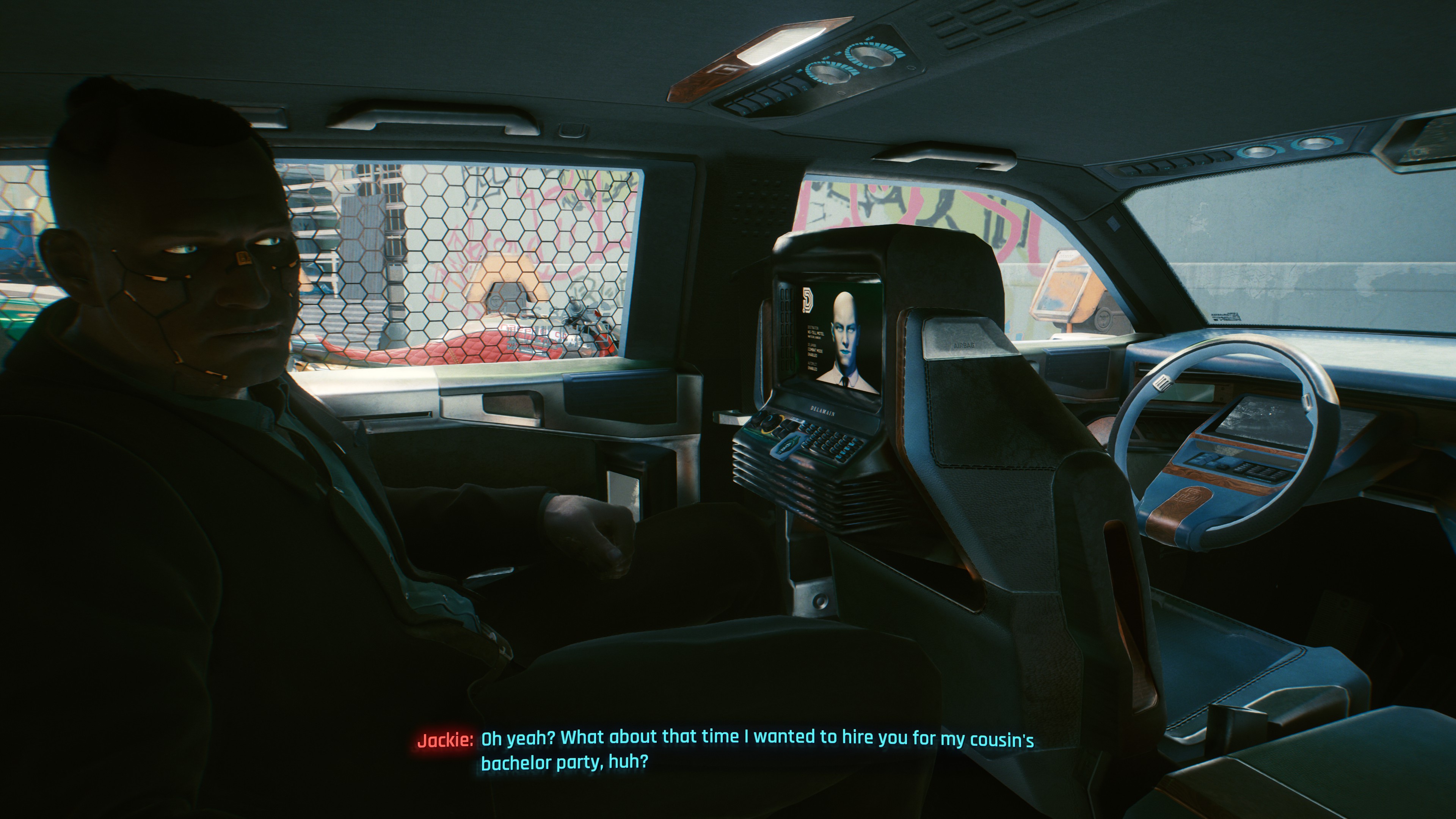
This is a fortunate side-effect of needing to fill these moments with something other than silence. Night City is an oppressive place, one that actively seeks to objectify and commodify its inhabitants so it can either sell them something or sell them to someone else. On the street, you're exposed to the full force of the city's naked, grasping materialism. The game's vehicles act as a shelter from much of this. A place where you can shut out the city's deafening roar, where you're a little bit safer from the gangs that roam the streets, where you can have a quiet conversation with a friend.
Perhaps the most explicit reference to vehicles as safe places comes near the end of the first act. As V and prepare for the heist at the Ashcroft Hotel, they board a Delamain taxi. "With Delamain", the taxi's AI driver states "You leave your problems at the door." V and Jackie are even treated to Delamain's Excelsior package, specifically designed to keep the wealthier clientele protected from the dangers of Night City. This is why, for me, Cyberpunk's ride-alongs are so fundamental to its experience, as they're the only place where you can see both the City, and the people who live in it, for what they truly are.
Rick has been fascinated by PC gaming since he was seven years old, when he used to sneak into his dad's home office for covert sessions of Doom. He grew up on a diet of similarly unsuitable games, with favourites including Quake, Thief, Half-Life and Deus Ex. Between 2013 and 2022, Rick was games editor of Custom PC magazine and associated website bit-tech.net. But he's always kept one foot in freelance games journalism, writing for publications like Edge, Eurogamer, the Guardian and, naturally, PC Gamer. While he'll play anything that can be controlled with a keyboard and mouse, he has a particular passion for first-person shooters and immersive sims.

